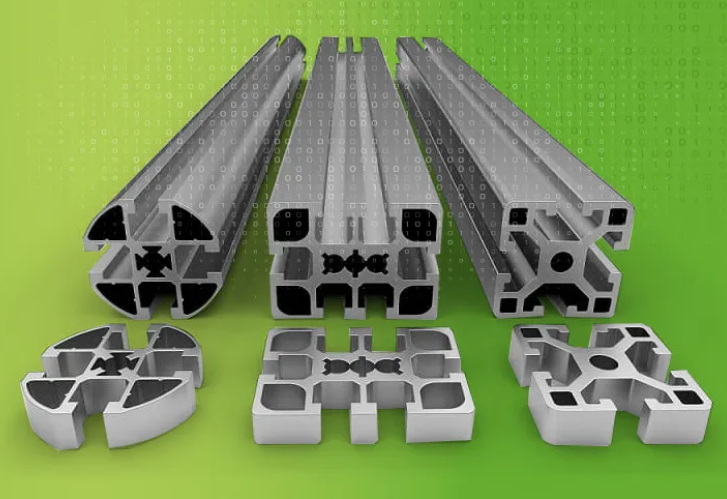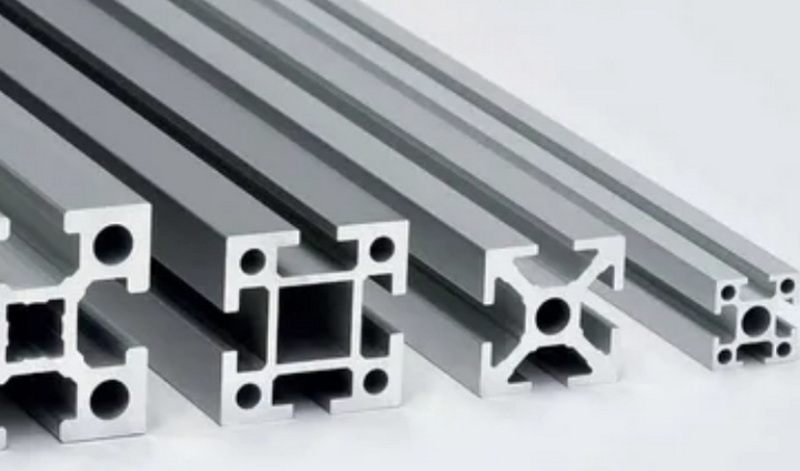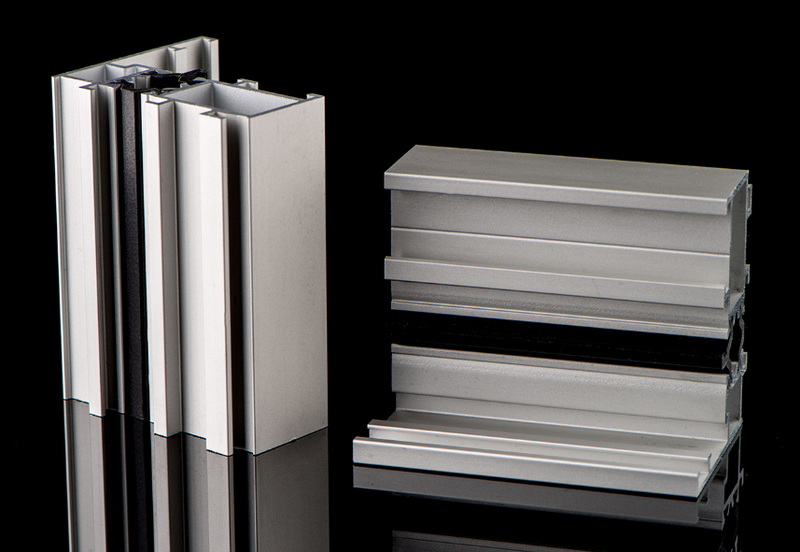Content Menu
● Understanding Aluminum Extrusion
>> Aluminum Extrusion Process
● Benefits of Aluminum Extrusion
>> 1. Lightweight Design
>> 2. High Strength-to-Weight Ratio
>> 3. Corrosion Resistance
>> 4. Design Flexibility
>> 5. Cost-Effectiveness
>> 6. Energy Efficiency
>> 7. Improved Thermal Conductivity
>> 8. Enhanced Aesthetic Appeal
● Applications of Aluminum Extrusion
>> Industry-Specific Benefits
>>> Automotive Industry
>>> Aerospace Industry
>>> Construction Industry
>>> Electronics Sector
● Enhancing Product Performance with Aluminum Extrusion
>> 1. Optimize Design for Extrusion
>> 2. Select the Right Alloy
>> 3. Implement Finishing Techniques
>> 4. Collaborate with Experienced Manufacturers
>> 5. Utilize Advanced Manufacturing Technologies
● Sustainability Considerations
>> Recycling Benefits
● Conclusion
● FAQ
>> 1. What types of products can be made using aluminum extrusion?
>> 2. How does aluminum compare to other materials like steel?
>> 3. What are the common alloys used in aluminum extrusion?
>> 4. Can extruded aluminum be recycled?
>> 5. What finishing options are available for extruded aluminum?
● Citations:
Aluminum extrusion is a manufacturing process that shapes aluminum alloy into a desired profile by forcing it through a die. This technique has gained significant popularity in various industries due to its numerous advantages, including lightweight properties, corrosion resistance, and versatility in design. In this article, we will explore how aluminum extrusion can enhance your product's performance, the benefits it offers, and how to effectively implement it in your manufacturing processes.

Understanding Aluminum Extrusion
Aluminum extrusion involves several key steps:
1. Heating the Aluminum Billet: The process begins with heating an aluminum billet to a temperature that makes it malleable.
2. Extruding Through a Die: The heated billet is then placed in an extrusion press where it is forced through a die, creating a continuous profile.
3. Cooling and Cutting: Once extruded, the aluminum profile is cooled and cut to the desired length.
4. Finishing Processes: Additional processes such as anodizing, painting, or machining may be applied to enhance the final product.
Aluminum Extrusion Process
The aluminum extrusion process allows for the creation of complex shapes and profiles that can be tailored to specific applications. The versatility of this method makes it suitable for various industries, including automotive, aerospace, construction, and consumer goods.
Benefits of Aluminum Extrusion
Aluminum extrusion offers several advantages that can significantly improve product performance:
1. Lightweight Design
Aluminum is known for its lightweight characteristics compared to other metals like steel. This property allows manufacturers to create products that are easier to handle and transport, reducing shipping costs and improving overall efficiency.
2. High Strength-to-Weight Ratio
Despite its light weight, aluminum has a high strength-to-weight ratio. This means that products made from extruded aluminum can withstand considerable stress while remaining lightweight. This characteristic is particularly beneficial in applications such as aerospace and automotive industries.
3. Corrosion Resistance
Aluminum naturally forms a protective oxide layer when exposed to air, which helps prevent corrosion. This makes extruded aluminum products ideal for outdoor applications or environments where moisture is present.
4. Design Flexibility
The extrusion process allows for complex shapes and designs that would be difficult or impossible to achieve with other manufacturing methods. This flexibility enables designers to create innovative products tailored to specific needs.
5. Cost-Effectiveness
While the initial setup for aluminum extrusion may be higher than some other methods, the long-term savings on material costs, reduced waste, and lower maintenance requirements make it a cost-effective solution for many manufacturers.
6. Energy Efficiency
The energy required for aluminum extrusion is significantly lower than that needed for other metals like steel. This not only reduces production costs but also minimizes the environmental impact associated with manufacturing processes.
7. Improved Thermal Conductivity
Aluminum's excellent thermal conductivity is another advantage magnified by the extrusion process. Extruded aluminum profiles are widely used in heat sinks, radiators, and HVAC systems, where efficient heat dissipation is crucial. The ability to design profiles with increased surface area maximizes heat transfer, enhancing the performance and reliability of electronic devices, engines, and climate control systems.
8. Enhanced Aesthetic Appeal
Aluminum can be easily finished with various coatings and anodization processes that enhance its appearance while providing additional protection against environmental factors. This makes it an attractive option for consumer products where aesthetics are important.

Applications of Aluminum Extrusion
Aluminum extrusion is utilized across various industries due to its versatile properties:
- Automotive Industry: Used for structural components, heat exchangers, and trim parts.
- Aerospace: Employed in aircraft frames, wings, and fuselage components due to its lightweight and strength.
- Construction: Commonly used for window frames, curtain walls, and roofing systems.
- Electronics: Utilized for heat sinks and enclosures due to excellent thermal conductivity.
- Consumer Goods: Found in furniture, appliances, and sporting goods for its aesthetic appeal and functionality.
Industry-Specific Benefits
Automotive Industry
In the automotive sector, the demand for lightweight materials has led to increased use of aluminum extrusions in vehicle components such as body structures and chassis parts. By reducing vehicle weight through aluminum use, manufacturers can improve fuel efficiency while maintaining structural integrity.
Aerospace Industry
The aerospace industry requires materials that can withstand high temperatures and stresses while remaining lightweight. Aluminum extrusions are preferred for aircraft structures due to their strength-to-weight ratio and resistance to corrosion.
Construction Industry
The construction industry has always been a significant user of aluminum extrusions. They are used in building facades, windows, doors, and roofing systems due to their durability and resistance to harsh weather conditions. Additionally, their lightweight nature simplifies handling during construction projects.
Electronics Sector
In electronics manufacturing, aluminum extrusions are commonly used for heat sinks that dissipate heat from components effectively. Their thermal conductivity enhances performance while extending the lifespan of electronic devices by preventing overheating.
Enhancing Product Performance with Aluminum Extrusion
To maximize the benefits of aluminum extrusion in your products, consider the following strategies:
1. Optimize Design for Extrusion
Work closely with engineers to design profiles that minimize material usage while maintaining strength. Utilizing computer-aided design (CAD) software can help visualize and optimize designs before production begins.
2. Select the Right Alloy
Choosing the appropriate aluminum alloy is crucial for achieving desired mechanical properties. Different alloys offer varying levels of strength, corrosion resistance, and workability.
3. Implement Finishing Techniques
Applying finishing techniques like anodizing or powder coating can enhance the aesthetic appeal of extruded products while providing additional protection against wear and corrosion.
4. Collaborate with Experienced Manufacturers
Partnering with manufacturers who specialize in aluminum extrusion ensures access to advanced technology and expertise in optimizing production processes.
5. Utilize Advanced Manufacturing Technologies
Incorporating modern technologies such as 3D printing alongside traditional extrusion methods can lead to innovative designs that push the boundaries of what's possible in product development.
Sustainability Considerations
As industries increasingly focus on sustainability practices, aluminum extrusion stands out due to its recyclability and energy efficiency during production. Aluminum can be recycled multiple times without losing its properties, making it an environmentally friendly choice compared to other materials.
Recycling Benefits
- Reduced Environmental Impact: Recycling aluminum saves up to 95% of the energy required to produce new aluminum from ore.
- Lower Carbon Footprint: Using recycled materials helps reduce greenhouse gas emissions associated with mining and processing raw materials.
- Cost Savings: Companies can save on material costs by sourcing recycled aluminum instead of new materials.
Conclusion
Aluminum extrusion presents a multitude of benefits that can significantly enhance product performance across various industries. Its lightweight nature, high strength-to-weight ratio, corrosion resistance, design flexibility, cost-effectiveness, energy efficiency, improved thermal conductivity, and aesthetic appeal make it an ideal choice for manufacturers looking to improve their products' functionality and appeal.
By understanding the intricacies of the aluminum extrusion process and implementing best practices in design and production—such as optimizing designs for extrusion or selecting appropriate alloys—businesses can leverage this technology to create innovative solutions that meet market demands effectively.
With these advantages in mind, companies looking toward future growth should consider incorporating aluminum extrusion into their manufacturing strategies as a means of enhancing product performance while promoting sustainability within their operations.

FAQ
1. What types of products can be made using aluminum extrusion?
Aluminum extrusion can be used to create a wide range of products including structural components for buildings, automotive parts like frames and panels, heat sinks for electronics, window frames in construction projects, furniture items like tables or chairs designed with aesthetic appeal in mind.
2. How does aluminum compare to other materials like steel?
Aluminum is lighter than steel but has a high strength-to-weight ratio which allows it to perform well under stress while reducing overall weight—this is particularly important in industries like automotive where fuel efficiency is critical. Additionally, aluminum offers better corrosion resistance compared to steel making it suitable for outdoor applications or environments exposed frequently moisture conditions over time without significant degradation occurring quickly as seen with steel counterparts under similar conditions over time periods measured years rather than months typically required maintenance cycles associated traditional materials used previously before introduction newer alternatives such as those derived from extruded forms produced today using modern techniques available now widely adopted across many sectors globally today too!
3. What are the common alloys used in aluminum extrusion?
Common alloys used include 6061 (general-purpose), 6063 (architectural applications), 6005 (structural applications), 7075 (high-strength applications). Each alloy has unique properties suited specifically towards particular uses depending upon requirements dictated by end-use scenarios encountered regularly throughout industry sectors relying heavily upon these materials today!
4. Can extruded aluminum be recycled?
Yes! Aluminum is highly recyclable without losing its properties—this means old products made from this metal can be melted down into ingots which then reformed into new shapes again via same processes originally employed during initial fabrication stages resulting ultimately less waste generated overall throughout lifecycle management phases involved here too!
5. What finishing options are available for extruded aluminum?
Finishing options include anodizing (for corrosion resistance), powder coating (for color customization), painting (to enhance aesthetics), machining (for precise dimensions) among others available depending upon specific needs dictated by project requirements encountered regularly across various sectors utilizing these materials extensively today!
Citations:
[1] https://simmal.com/industries-that-benefit-from-aluminium-extrusion/
[2] https://www.tensilemillcnc.com/blog/12-major-benefits-of-aluminum-extrusions
[3] https://www.futuremarketinsights.com/reports/aluminium-extrusions-market
[4] https://www.supergas.com/for-industrial/case-studies/aluminium-extrusion-application
[5] https://simmal.com/the-advantages-of-aluminium-extrusion-in-manufacturing/
[6] https://www.grandviewresearch.com/industry-analysis/us-aluminum-extrusion-market-report
[7] https://www.sourceint.com/how-has-aluminum-extrusion-evolved-over-time/
[8] https://flowstore.com/understand-aluminium-extrusion-modern-manufacturing/
[9] https://straitsresearch.com/report/aluminum-extrusion-market
[10] https://www.gabrian.com/what-are-aluminum-extrusions-used-for/













